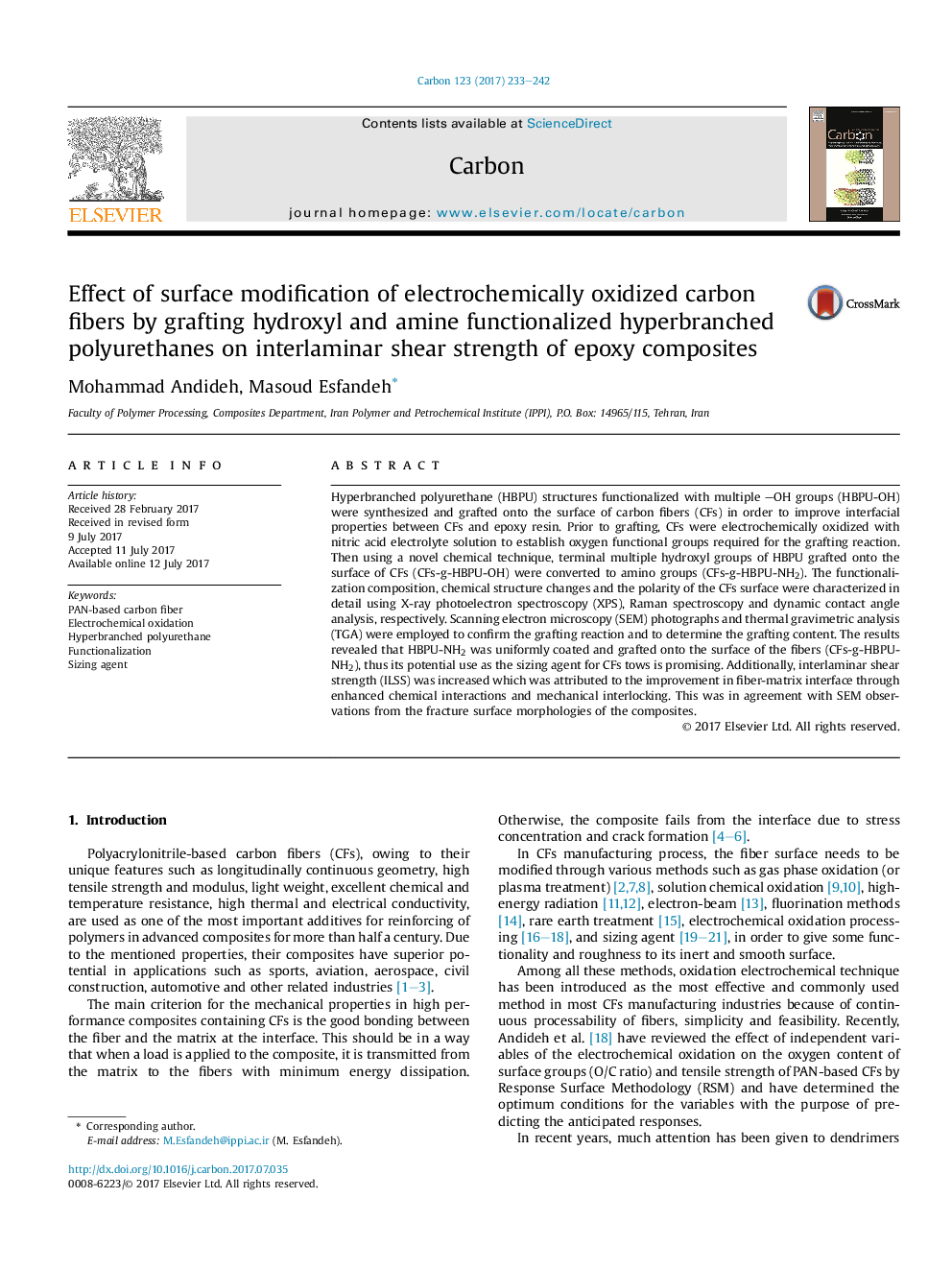| Article ID | Journal | Published Year | Pages | File Type |
|---|---|---|---|---|
| 5431554 | Carbon | 2017 | 10 Pages |
Hyperbranched polyurethane (HBPU) structures functionalized with multiple OH groups (HBPU-OH) were synthesized and grafted onto the surface of carbon fibers (CFs) in order to improve interfacial properties between CFs and epoxy resin. Prior to grafting, CFs were electrochemically oxidized with nitric acid electrolyte solution to establish oxygen functional groups required for the grafting reaction. Then using a novel chemical technique, terminal multiple hydroxyl groups of HBPU grafted onto the surface of CFs (CFs-g-HBPU-OH) were converted to amino groups (CFs-g-HBPU-NH2). The functionalization composition, chemical structure changes and the polarity of the CFs surface were characterized in detail using X-ray photoelectron spectroscopy (XPS), Raman spectroscopy and dynamic contact angle analysis, respectively. Scanning electron microscopy (SEM) photographs and thermal gravimetric analysis (TGA) were employed to confirm the grafting reaction and to determine the grafting content. The results revealed that HBPU-NH2 was uniformly coated and grafted onto the surface of the fibers (CFs-g-HBPU-NH2), thus its potential use as the sizing agent for CFs tows is promising. Additionally, interlaminar shear strength (ILSS) was increased which was attributed to the improvement in fiber-matrix interface through enhanced chemical interactions and mechanical interlocking. This was in agreement with SEM observations from the fracture surface morphologies of the composites.
Graphical abstractDownload high-res image (99KB)Download full-size image
